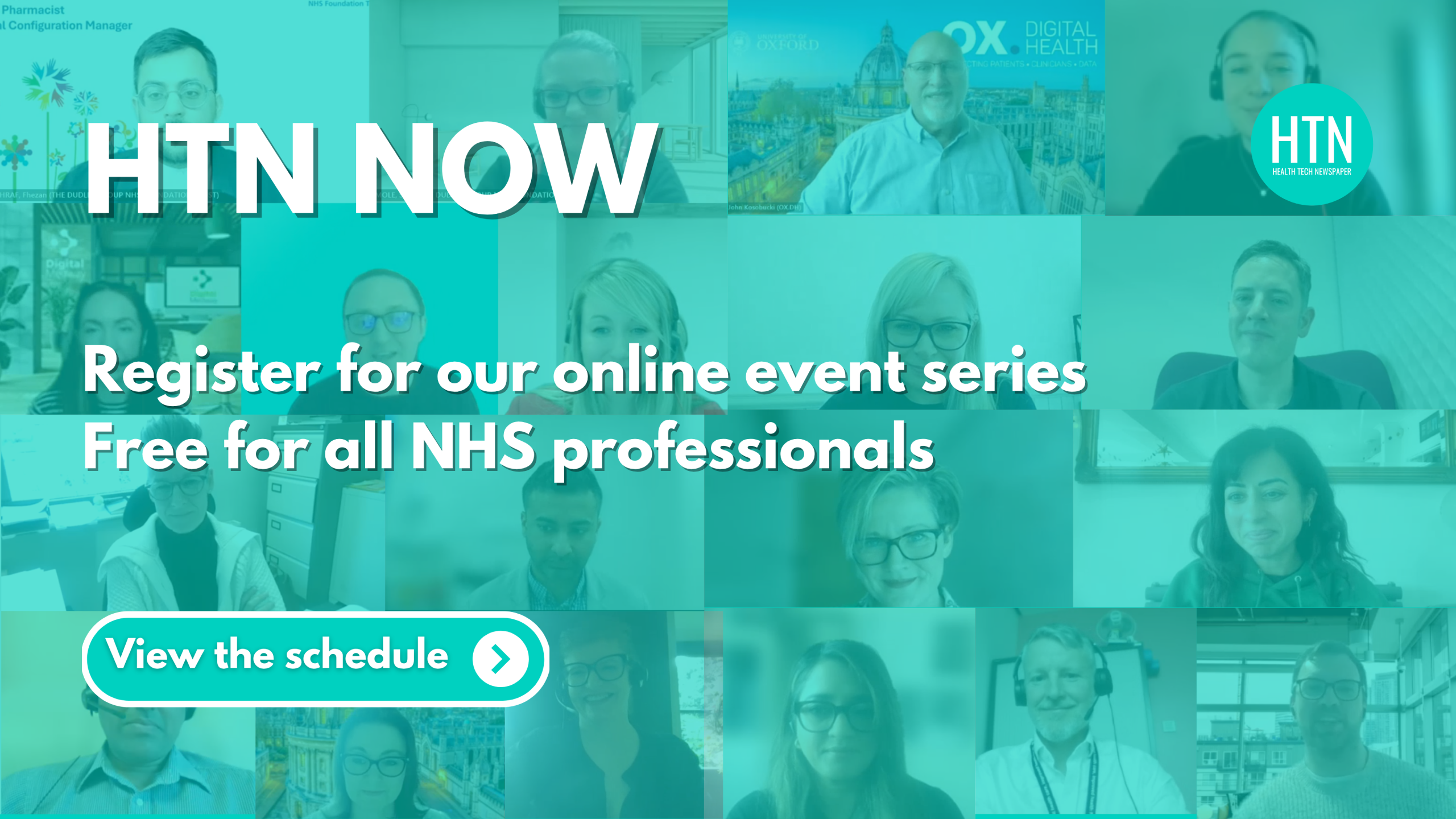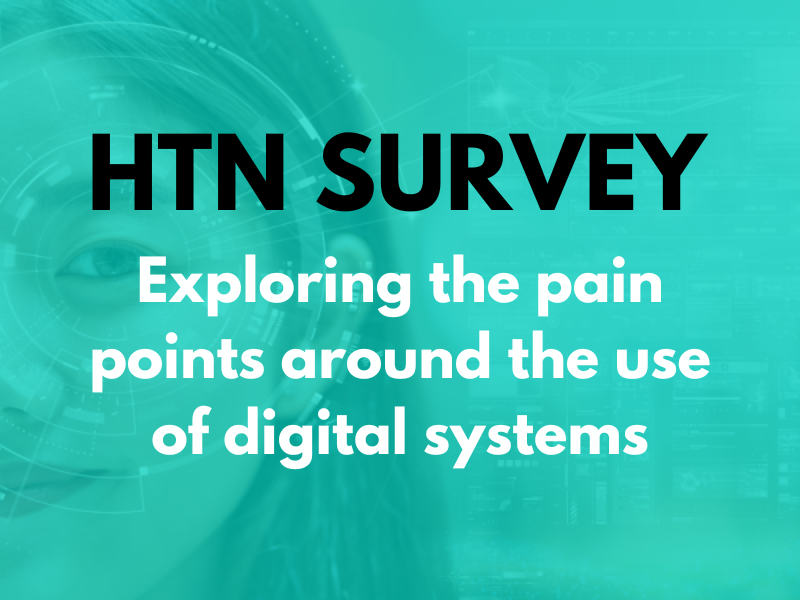Health Education England has shared some of its global projects tackling health issues with technology.
In this article, Richard Price, Global Health Education Technologies Advisor at Health Education explains.
The importance of global collaboration in tackling health issues has been brought into sharp focus in the past two years. In an era dominated by health insecurity, it is crucial that global health systems are connected and can work together to solve inequalities.
International collaboration has two-way benefits. It can help the NHS learn from our peers overseas by drawing on their insights and leverage the UK’s expertise to help them meet their own challenges.
Health Education England’s Technology Enhanced Learning (TEL) team is a leading provider of online and digital learning resources for the health and social care workforce. TEL is working in lower and middle income countries to share knowledge and experience of delivering education and training globally and working collaboratively to develop solutions that work locally.
In carrying out this vital function, the team has always operated as part of a wider national and international community across elearning, simulation and the innovation and adoption of emerging technologies. This includes partnerships with other global health systems, non-government organisations (NGOs) and the World Health Organisation (WHO) to learn from and share good practice.
TEL has been sharing UK expertise with other countries that require support to develop their health education offer. TEL continues to expand its work overseas as an education and training expert advisor and trusted global partner. As part of Year of Health and Care Workers and with HEE working closely with WHO, HEE’s unique position as a national healthcare education provider is being offered to support the education of millions of health and care colleagues globally and to help deliver the UN Sustainable Development Goals.
Georgia
A powerful example of this is HEE’s work in rural Georgia. In August, the WHO requested support from HEE with the provision and implementation of a telehealth solution.
Georgia is characterised by extremes of rurality, of mountains and vast open plains, with only one third of the population living in urban areas such as the capital, Tbilisi. There is a steady migration of younger populations from these rural areas to cities, which are more attractive to a younger demographic and offer better paid employment opportunities. There is an acute shortage of rural primary care doctors and a de-skilled nurse workforce which, combined with an ageing workforce, presents a “perfect storm” for primary health provision.
However, at the beginning of the COVID-19 pandemic, the Georgian Ministry of Health, with support from the European Union, decided to fund telehealth solutions to benefit rural communities. Telehealth equipment was bought to support the provision of rural primary health and connect primary health doctors with specialists.
There is nothing more rewarding than being able to learn from others and share our own experiences from the UK, and this visit was no exception. We met many health workers and stakeholders involved in the implementation of telehealth to learn from their experiences whilst sharing our own work and knowledge from the UK.
We also visited some of the rural primary health centres and saw the telehealth equipment in use. The key challenges identified from these visits appear to be the need for co-ordination across departments involved in the implementation of telehealth; the need for significant improvements to connectivity in rural settings; addressing the workforce capabilities through development of a comprehensive digital skills and capabilities framework; and developing effective clinical pathways where telehealth can complement the existing health provision.
These challenges are not insignificant but are not unique to Georgia and are challenges we have faced both in England and Scotland when implementing telemedicine and telehealth solutions for remote communities. Indeed, some of these challenges still remain here in the UK, particularly around digital skills and capabilities, so we have much to learn from the Georgian experience as well.
Uganda
Uganda is one of the world’s poorest countries and has one of the highest global incidences of trauma from violence and injury, with road traffic mortality 40 per cent above the global average.
This is particularly true in Kampala, where boda boda (motorcycle taxis) are frequently involved in accidents, causing life-threatening trauma injuries. A lack of knowledge and capacity to treat trauma and perform emergency procedures means that emergency workforce capacity building and training is considered a national priority by the Ugandan Ministry of Health.
I was privileged to be part of a delegation on a scoping visit to learn more about the Ugandan health system, with a view to offering support to reduce the burden of trauma through implementation of TEL. Meetings with the Ministry of Health, clinicians in hospitals in both urban and rural areas of the country, and academics, indicated high level support for the use of technology enhanced learning, specifically immersive technologies to deliver the necessary training to upskill health workers in emergency care.
There were encouraging discoveries along the way, such as encountering the African Centres of Excellence Virtual Reality Laboratory (sponsored by the National Institutes of Health) at Makerere University in Kampala. The students were just as passionate about VR as we are in TEL. The visit culminated in a full-day workshop, where those unfamiliar with immersive technologies were given the opportunity to try them using some of TEL’s equipment brought in for the event. This included showing holographic patients and images on Microsoft HoloLens, and 360 video footage and CGI content on the HTC Vive headsets. I also gave a demo of how easy it is to capture a 360 video by taking a photo of the audience and turning it into a learning object in real time.
Provision of high quality and accessible healthcare education will help the Ugandan health system to upskill their workforce to support trauma and emergency care. TEL’s immersive technology solutions will certainly go some way to addressing these challenges. We’re looking forward to continuing to work with Ugandan colleagues, supporting the implementation of innovative immersive technology solutions to upskill communities in both rural and urban areas to learn lifesaving skills.
The Philippines
Our work around non-communicable diseases (NCDs) also demonstrates the important role that TEL can play in other countries. The prevalence of these chronic diseases is increasing and is rapidly overtaking the impact of diseases such as malaria and tuberculosis, more commonly perceived to be associated with health systems in low- and middle-income countries.
NCDs account for 68 per cent of all deaths in the Philippines. So, for the past three years TEL has been collaborating with colleagues there via the NHS Consortium for Global Health, and collectively, we have drawn on our experience in workforce learning and digital literacy to develop a set of learning interventions with the team in the Philippines. We worked together to co-design systems for monitoring the prevalence of NCDs; to educate the workforce in the digital skills necessary to use IT systems; and elearning to educate health workers in prevention of NCDs.
COVID-19 prevented travel and, after three years of working virtually, the opportunity finally arose to physically meet the Philippines team. It was clear from the discussions that the programme will have a lasting impact on the delivery of education in the Philippines. Similarly, there will be an impact on clinical practice in the UK, such as developing new ways of presenting NCD information in elearning.
As with all global work, success is built upon personal relationships. The programme was successful at educating more than 1,000 health workers in NCDs, but the final visit to close out the programme reinforced these bonds, forging new friendships and identifying new opportunities for collaboration in the future.
Like many during the pandemic, I saw how interconnected our work in the NHS is with the rest of the world. Whereas in the UK, many of the changes we make in TEL are incremental improvements, the work in low-income countries is sometimes starting from scratch, so we can make a huge difference by simply sharing our experience, as well as learning from other health systems to improve our own TEL offer in the UK.





